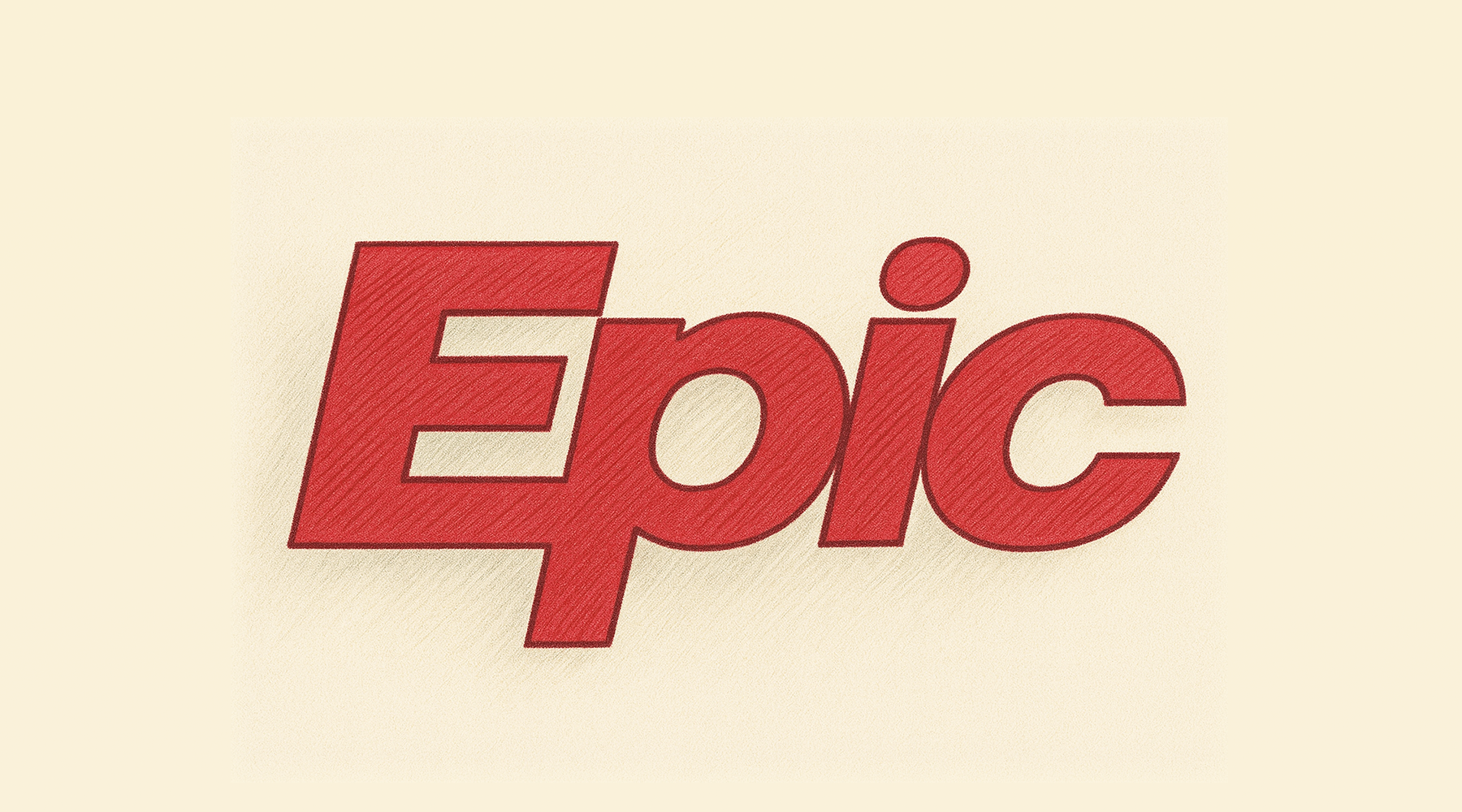Executive Summary: The Five-Minute Version
Here's something that shouldn't exist: A software company that controls the medical records of 78 percent of Americans—255 million people—yet has never gone public, never taken venture capital beyond the original $70,000, and operates from a fantasy-themed campus in Verona, Wisconsin, population 14,000.
Epic Systems generates an estimated $4.9 billion in annual revenue with software margins in an industry that typically runs on service margins. They maintain near-100 percent customer retention in a market where switching vendors is common. They've built what's effectively a monopoly without the typical monopolist playbook—no acquisitions, no predatory pricing, no regulatory capture. Well, mostly no regulatory capture.
Here's what matters:
- The business model: Epic sells comprehensive hospital software that becomes so embedded in operations that removal would be like performing surgery on yourself
- The moat: Once implemented, Epic costs tens of millions to replace and requires retraining thousands of workers who've spent years learning its intricacies
- The numbers: 30 percent EBITDA margins, 25 percent organic growth CAGR over four decades, estimated $45 billion valuation
- The lesson: In complex industries, being comprehensive beats being elegant—and switching costs compound exponentially with integration depth
The Impossible Business Model
Walk into any major American hospital and ask a doctor what they think of Epic. You'll likely get an eye roll, maybe a groan, possibly a rant about how many clicks it takes to order Tylenol. Yet that same hospital will pay Epic millions annually and would sooner replace their CEO than their Epic system.
This is the Epic paradox: a software company that many users actively dislike has achieved 78 percent market penetration of digitized American health records and essentially never loses a customer. In Epic's 45-year history, exactly one client has left and returned. One.
The conventional wisdom in enterprise software says you win by being best-of-breed in your category, by having elegant user interfaces, by making your product easy to implement and switch to. Epic does exactly the opposite—and generates an estimated $4.9 billion annually as a result.
Here's the thing most people miss: Epic isn't really selling software. They're selling a permanent marriage.
Part I: How Epic Actually Makes Money
The Core Engine
Let's strip away the mythology and look at the machine itself. Epic generates approximately $4.9 billion in annual revenue, but the way they get there violates most of what you learned in business school.
Start with the basic transaction. A hospital needs electronic health records. In any normal enterprise software business, here's what would happen: vendor provides software, charges an annual license fee based on users or usage, provides some support, everyone moves on. But Epic does something different. They charge an upfront license fee that can range from $10 million for a small hospital to over $1 billion for a large health system, plus annual maintenance fees of about 20 percent of that initial cost.
This seems insane until you realize the true nature of the product. Epic isn't selling software you install—they're selling a complete transformation of how a hospital operates. The average Epic implementation takes 18 months and involves Epic employees literally camping out at the hospital, training every single doctor, nurse, and administrator. Partners HealthCare (now Mass General Brigham) spent $1.6 billion implementing Epic—more than the cost of several of their buildings.
The math works like this: Each hospital bed running Epic generates roughly $2,800 in annual recurring revenue for the company. With Epic systems managing approximately 55 percent of all U.S. hospital beds, that's a monumentally sticky revenue base. The true cost—and I mean the all-in cost including implementation, training, and lost productivity during transition—averages about $100,000 per bed. That leaves Epic with 30 percent EBITDA margins, which in the healthcare IT business is like running a casino in a church.
But here's where it gets interesting. While competitors chase the latest features or the smoothest user interface, Epic optimizes for something else entirely: comprehensiveness. Their system handles everything—patient records, billing, pharmacy, lab results, scheduling, even the cafeteria menu system. This isn't elegant. It's not even particularly user-friendly. But it's complete.
The Revenue Architecture
Epic's $4.9 billion in revenue isn't one business—it's an interconnected web of products that create compounding lock-in effects.
The biggest chunk, roughly 60 percent, comes from large hospital systems and academic medical centers. You'd expect this market to be commoditized by now, but Epic maintains pricing power that would make a luxury brand jealous. The average Epic customer pays 20-30 percent more than they would for competing systems. Mayo Clinic, Cleveland Clinic, Johns Hopkins—they all pay the Epic tax. Why? Because the alternative isn't just switching software. It's rewiring the entire nervous system of their organization.
The second stream—and this is the one analysts usually miss—is the ecosystem revenue. Epic charges for connections to other systems, for additional modules, for optimization consulting through their Boost subsidiary. When AdventHealth switched from Cerner to Epic in 2020, they didn't just buy software. They bought into an entire economy where Epic controls the rules, the currency, and the trade routes.
Then there's the training and certification business. Epic doesn't just train hospital employees—they've created an entire education industry around their product. Thousands of consultants make six-figure salaries as Epic implementation specialists. Universities offer Epic certification programs. It's like Microsoft in the 1990s, except the certificates actually matter because hospitals won't hire you without them.
Margin Analysis: The Numbers That Shouldn't Exist
In 2023, Epic reported to employees that they maintained approximately 30 percent EBITDA margins. Let me put that in context. The average healthcare IT company runs at 15 percent. The best performers—companies like Veeva Systems—might hit 25 percent in a good year.
Epic has maintained above 25 percent for over a decade.
How? It starts with gross margins. By never acquiring companies and building everything in-house, Epic avoids the integration costs and redundancies that plague roll-up strategies. Cerner, before being acquired by Oracle, was essentially 36 acquired companies held together with digital duct tape. Their EBITDA margins? 18 percent on a good day.
Epic's R&D spending tells another story. They pour 50 percent of revenue back into product development—a higher percentage than Apple, Google, or Microsoft. This should destroy margins. Instead, it creates them. Every dollar spent on R&D makes the product more comprehensive, which makes it harder to replace, which allows for higher prices, which funds more R&D. It's a virtuous cycle that competitors can't match because they're too busy servicing debt from acquisitions or satisfying quarterly earnings expectations.
The Strategic Moat Quantified
Every business school case study asks the same question: What prevents copying? With Epic, the answer isn't what you'd expect.
The obvious moat is switching costs. Once a hospital spends $100 million implementing Epic and training thousands of employees, switching to another vendor would cost even more. Sunk cost fallacy? Maybe. But when the sunk cost is large enough, the fallacy becomes rational.
Here's proof: When the Department of Veterans Affairs tried to switch from their homegrown VistA system to Cerner in 2018, they budgeted $10 billion over 10 years. By 2024, they'd spent $20 billion and covered only a fraction of their facilities. The project won't be complete until 2031 at the earliest. That's thirteen years to switch electronic health record systems. Thirteen years.
But the real moat is more subtle. Epic has created what I call "operational dependence." Their software doesn't just record what happens in a hospital—it determines what can happen. Doctors can only order tests that exist in Epic. Pharmacists can only dispense drugs that Epic recognizes. Billing can only code procedures that Epic allows. The software has become the de facto operating system of American healthcare.
The numbers prove this out. Oracle spent $28.3 billion acquiring Cerner in 2022, thinking they could apply their enterprise software expertise to healthcare. Two years later, Cerner's market share has continued declining while Epic's has grown. Oracle learned what others before them discovered: you can't just copy features. You have to copy an entire ecosystem, and ecosystems can't be acquired—they have to be grown.
Part II: The Strategy Nobody Else Can Execute
The Anti-Playbook
If you were teaching a business school class on enterprise software, you'd tell students to focus on specific verticals, build best-of-breed solutions, make switching easy to lower barriers to adoption, and scale through acquisition. Epic does none of these things.
Instead of focusing on one aspect of hospital operations, they built everything. This costs them operational efficiency—maintaining hundreds of modules is exponentially more complex than maintaining a few—but gives them strategic control. When a doctor admits a patient in Epic, that action triggers cascades through billing, pharmacy, laboratory, and scheduling systems instantaneously. Competitors using modular approaches have to sync data between systems. In healthcare, where delays can literally kill people, milliseconds matter.
Instead of making switching easy, Epic makes it nearly impossible. Not through legal lock-in or proprietary data formats, but through sheer comprehensiveness. Moving from Epic to another system isn't like switching from Microsoft Word to Google Docs. It's like moving from English to Mandarin while performing brain surgery.
Instead of scaling through acquisition, Epic has never bought another company. Not one. Judy Faulkner's logic is simple: when you acquire a company, you acquire their technical debt, their cultural baggage, and their compromises. By building everything internally, Epic maintains complete control over their architecture. The trade-off? It took them 45 years to build what private equity firms assemble in five. But their organic growth rate of 25 percent CAGR over four decades beats any roll-up strategy.
Value Chain Revolution
The traditional healthcare IT value chain looks like this: software vendor sells to hospital, hospital IT implements it, doctors and nurses use it, patients receive care. Total implementation time: 6-12 months. Ongoing support: mostly remote. Gross margin for vendor: 70 percent.
Epic rebuilt the entire chain. They don't just sell software—they provide implementation teams who live on-site for 18 months. They don't just train IT staff—they train every single end user. They don't provide remote support—they assign each customer a "BFF" (Best Friend Forever) who knows their specific configuration intimately.
The result: Implementation time: 18-24 months. Gross margin: probably lower than pure software companies. But customer lifetime value: essentially infinite.
Here's the genius part—customers actually prefer it this way. Jeff Gautney, CIO of Rush University System for Health, puts it simply: "You get what you pay for 100 percent of the time, despite Epic being 'not cheap.'"
Competitive Dynamics: The Graveyard of Attempts
Since 2010, at least a dozen well-funded companies have tried to disrupt Epic's dominance. The casualty list reads like a who's who of tech and healthcare:
Google tried with Google Health. They spent an estimated $500 million building a consumer-friendly health record system. They assumed patients wanting access to their own data would force hospitals to adopt more open systems. The project died in 2012 after capturing approximately 0 percent market share.
Amazon, Berkshire Hathaway, and JPMorgan Chase formed Haven in 2018, a joint venture to transform healthcare starting with their own employees. With unlimited capital and 1.2 million covered lives as a testbed, surely they could build better technology. Haven folded in 2021 without deploying a single alternative to Epic.
Oracle's $28.3 billion acquisition of Cerner in 2022 was supposed to bring enterprise software sophistication to healthcare. Oracle CEO Safra Catz promised to modernize Cerner's technology and take market share from Epic. Two years later, Cerner's customer satisfaction scores have hit all-time lows and multiple health systems have defected to Epic.
The pattern is always the same: New entrant sees Epic's clunky interface and thinks they can win with better user experience. They build beautiful, modern software. They demo it to doctors who love it. They approach hospitals with aggressive pricing. And then they discover that hospitals don't buy software based on user experience or even price. They buy based on risk mitigation. And in healthcare, nobody ever got fired for buying Epic.
Part III: The Current Challenge
The $10 Billion Question
Right now, as you're reading this in 2025, Epic is facing a decision that will define the next decade.
The issue is artificial intelligence. Epic has over 100 AI features in development, from ambient clinical documentation to predictive analytics for patient deterioration. They're betting that AI represents the next platform shift in healthcare technology. The math supports them: their Cosmos research database contains de-identified records from 296 million patients, giving them a data advantage no competitor can match.
On one side, the technologists argue Epic should open up their platform, create marketplaces for AI applications, become the iOS of healthcare. This could 10x their market cap by capturing a piece of every healthcare AI transaction. On the other side, the traditionalists point out that Epic's entire moat comes from control. Open platforms get disrupted. Closed gardens last forever.
Here's what the real-time data tells us: In September 2024, Particle Health filed an antitrust lawsuit against Epic, alleging the company blocks competitors from accessing patient data they're legally entitled to share. Epic's defense? They're protecting patient privacy from companies that want to monetize health data. Both sides are right, which makes the situation particularly dangerous.
The Threat Matrix
Epic has survived the HITECH Act bonanza, the rise of cloud computing, and acquisition attempts by private equity. But the current environment presents three specific threats that could actually matter:
The biggest is regulatory. With 78 percent market share of digitized health records, Epic is one antitrust ruling away from being forced to open up. The Particle Health lawsuit is just the beginning. If courts rule that Epic must provide open APIs with regulated pricing, their entire business model crumbles.
The second threat—and the one keeping management up at night—is generational change. Epic's software was designed by baby boomers for baby boomers. The average Epic user is 47 years old. Meanwhile, young doctors trained on Instagram and TikTok are entering hospitals and finding themselves using software that looks like it was designed in 1995 (because much of it was). At some point, the pain of staying with Epic might exceed the pain of switching.
The third threat is international expansion failure. Epic's implementations in Denmark, Finland, and Norway have been disasters. In Norway, 90 percent of doctors consider the Epic system a threat to patient safety. The problem? Epic's software is built for the byzantine complexity of American healthcare—prior authorizations, insurance codes, Medicare billing rules. In countries with simpler healthcare systems, Epic is like using a Swiss Army knife to butter toast. Overengineered and dangerous.
Part IV: The Lessons
The Complexity Trap (That Isn't a Trap)
The conventional wisdom in software is that simplicity wins. Apple proved it in consumer electronics. Google proved it in search. But Epic proves the opposite: in complex industries, comprehensiveness beats elegance every time.
When your problem space is inherently complex—like healthcare, with its thousands of procedures, medications, and regulations—simplification isn't just difficult, it's dangerous. A beautiful, simple interface that can't handle edge cases will fail when a patient presents with a rare condition at 3am. Epic's interface is ugly because it has to accommodate everything. And in healthcare, everything happens.
The lesson for founders: If you're entering a complex industry, resist the temptation to simplify. Instead, embrace the complexity and make it manageable. Your product will be harder to use, harder to sell, and harder to implement. It will also be impossible to displace.
The Power of Saying No (To Everything)
Epic has never gone public, never taken venture capital, never made an acquisition, never offshore development, never offered freemium pricing. In an industry where everyone eventually sells out, Epic's restraint has become its greatest strategic advantage.
By staying private, they avoid the quarterly earnings treadmill that forces competitors to optimize for short-term metrics. By avoiding acquisitions, they maintain architectural coherence that integrated competitors can't match. By keeping development in-house in Wisconsin, they ensure every engineer understands the American healthcare context intimately.
The math is compelling: Epic's 25 percent organic CAGR over 40 years beats the returns of almost any private equity roll-up or venture-backed growth story. Sometimes the best strategy is not having an exit strategy.
Network Effects Without Networks
Epic has created powerful network effects without building a traditional network business. They don't connect users to each other like Facebook. They don't create marketplaces like Amazon. Instead, they've built what I call "expertise network effects."
Here's how it works: The more hospitals use Epic, the more consultants specialize in Epic, the more universities teach Epic, the more doctors train on Epic. 90 percent of medical students now learn on Epic systems. When they graduate and join hospitals, they pressure their employers to use Epic because that's what they know. It's a 20-year feedback loop that competitors can't short-circuit with better features or lower prices.
This is applicable beyond healthcare. If you can become the training ground for an industry's future workforce, you don't need to be the best product. You just need to be the default.
Part V: The Origin Story
From Madison Basement to Medical Monopoly
To understand why Epic's model works, you need to understand the constraints that created it.
Judy Faulkner was 36 when she started Epic Systems in 1979 with $70,000—$6,000 of her own money and $64,000 from friends and family. This was Madison, Wisconsin, when the entire venture capital industry basically meant Kleiner Perkins and Sequoia in California. The conventional path would have been to move to Silicon Valley, raise venture capital, and scale fast. But Faulkner had a problem: she was a computer programmer who happened to be a woman in 1979, she had young children, and she wasn't about to uproot her life for Sand Hill Road.
The first product wasn't even electronic health records. It was scheduling software for a single doctor's office, written in MUMPS (Massachusetts General Hospital Utility Multi-Programming System), a programming language so obscure that most programmers have never heard of it. Faulkner sold it for $5,000 to a local physician. The margin was terrible. But Faulkner noticed something: the doctor didn't just want scheduling. He wanted billing. Then he wanted patient records. Then he wanted lab results.
This led to the first pivot: instead of selling one product to many customers, Epic would sell many products to one customer. Instead of horizontal scaling, vertical integration. It failed immediately. Building comprehensive software for even one clinic was monumentally complex. But the failure revealed something crucial: healthcare operations are so interconnected that partial solutions create more problems than they solve.
The Moment Everything Changed
The transformation from small business to empire happened during a crisis that should have killed the company.
It was 1987, and Epic had grown to about $10 million in revenue. They'd just signed their biggest client ever—Harvard Community Health Plan. The implementation was a disaster. The software crashed constantly. Data got corrupted. Doctors threatened to quit. Harvard threatened to sue.
Faulkner made a decision that defined Epic's future: instead of trying to fix the software remotely, she sent her entire development team to live in Boston. For six months, Epic employees shadowed doctors, watched workflows, and rebuilt the software in real-time based on what they observed. It cost more than Epic's entire annual profit.
But something unexpected happened. The doctors, who had been Epic's harshest critics, became its biggest advocates. Not because the software got dramatically better (though it did improve), but because they finally had technologists who understood their world. The Epic team learned medical terminology, understood clinical workflows, and most importantly, grasped the life-and-death stakes of their work.
The immediate result: Harvard Community Health Plan became Epic's most successful implementation. But the second-order effect was more important. Epic realized that selling healthcare software wasn't about having the best technology—it was about having the deepest healthcare expertise. From that point forward, every Epic employee, including cafeteria workers, would spend time in clinical settings.
Part VI: The Scaling Story
How to Grow 462,000x Without Losing Your Soul
Between 1979 and 2023, Epic grew from a $70,000 investment to an estimated $45 billion valuation. Most companies that scale this fast either raise massive capital or compromise their core principles. Epic did neither.
The secret was patient capital—not the financial kind, but the temporal kind. While competitors rushed to go public or get acquired, Epic grew at exactly the pace their cash flow allowed. No debt. No venture capital. No growth hackers. Just compound interest applied to enterprise software.
In 1993, they had 150 employees and $20 million in revenue. By 2003, 1,500 employees and $200 million. By 2013, 8,000 employees and $1.5 billion. By 2023, 13,000 employees and $4.9 billion. Each decade, they 10x'd revenue while maintaining the same basic strategy: build comprehensive software, implement it deeply, never lose a customer.
The constraint of self-funding forced discipline. They couldn't blitzscale like venture-backed competitors. They couldn't acquire their way to growth like private equity-backed roll-ups. They had to earn every dollar of growth by delivering value. This seemed like a disadvantage in the go-go 2000s when competitors were raising hundreds of millions. But when the 2008 financial crisis hit, Epic kept growing while leveraged competitors collapsed.
The Competition Responds
By 2009, Epic was too big to ignore. The industry—which had dismissed them as regional players with weird architecture—suddenly realized the threat they posed.
The counterattack was coordinated and well-funded. The HITECH Act had just allocated $27 billion in incentives for electronic health record adoption. Every technology company wanted in. Microsoft, Google, Apple, Amazon—they all saw healthcare IT as the next frontier.
But they'd misread the market. The HITECH Act didn't create demand for innovation—it created demand for compliance. Hospitals needed systems that could meet "Meaningful Use" requirements to qualify for incentive payments. Epic had spent 30 years building software that could handle every possible regulatory requirement. The tech giants had built beautiful prototypes that couldn't bill Medicare.
The result was a land grab that Epic won by default. Between 2009 and 2015, Epic's market share grew from 20 percent to 50 percent. Not because they had the best technology, but because they were the safe choice in an industry that punishes risk-taking.
Part VII: The Modern Era
The AI Revolution That Isn't (Yet)
Epic's approach to artificial intelligence reveals everything about how they think about technology adoption.
While Silicon Valley startups promise AI that will replace doctors, Epic is building AI that makes doctors marginally more efficient. Their ambient documentation tool saves physicians 15 minutes per day. Their sepsis prediction algorithm reduces false positives by 20 percent. Their medication interaction checker prevents a few dozen errors per hospital per year.
These seem like small improvements. But multiply them across 1,000 hospitals, 500,000 physicians, and 100 million patient encounters annually, and you get massive systemic improvement. Epic's AI strategy isn't about moonshots—it's about compound interest.
The Cosmos research database gives them an insurmountable data advantage. With 296 million patient records, they can train algorithms on populations that academic researchers could never access. But here's the kicker: they share this research freely. Epicresearch.org publishes studies that competitors could theoretically use. Why? Because Epic knows that data without workflow integration is worthless. And nobody can match their workflow integration.
The International Disaster That Teaches Everything
Epic's failed international expansions are more instructive than their domestic successes.
In Denmark, doctors resorted to Google Translate because Epic's terminology wasn't properly localized. In Norway, the implementation became a political scandal. In the UK, Cambridge University Hospitals saw executives resign after Epic-related failures.
The surface reading is that Epic can't execute internationally. The deeper truth is that Epic's software is a perfect mirror of American healthcare's dysfunction. The complexity that makes Epic indispensable in America makes it unusable elsewhere.
American healthcare involves negotiating prices with dozens of insurance companies, coding procedures to maximize reimbursement, and documenting everything to avoid lawsuits. Epic handles all of this brilliantly. But in single-payer systems where prices are fixed, billing is simple, and medical malpractice is rare, Epic's core capabilities become liabilities.
This constraint might save Epic. As long as American healthcare remains uniquely complex, Epic remains uniquely valuable. The moment America simplifies its healthcare system is the moment Epic becomes vulnerable. Fortunately for Epic, that moment seems perpetually 10 years away.
Part VIII: The Meta-Story
What Epic Reveals
Zoom out far enough and Epic's story isn't really about healthcare software. It's about how monopolies form in complex industries.
In a world where every MBA learns about disruption and every founder dreams of being the next Uber, Epic proves that sometimes the tortoise wins. They've built $45 billion in value by explicitly rejecting every rule of modern capitalism. No exits. No acquisitions. No venture capital. No shortcuts.
This shouldn't be possible in efficient markets. The fact that it is tells us something important: markets aren't efficient in complex domains. When the problem space is complicated enough, when switching costs are high enough, when expertise requirements are specific enough, traditional market forces break down.
The Path Not Taken
Every major decision in Epic's history involved choosing the harder path. Self-fund instead of raising capital. Build everything instead of acquiring. Train every user instead of providing documentation. Stay in Wisconsin instead of moving to Silicon Valley.
The cumulative effect of these choices is a business that's essentially competition-proof.
But here's what's interesting: At each decision point, smart people—investors, competitors, analysts—thought Epic was making a mistake. They had good reasons: venture capital would accelerate growth, acquisitions would add capabilities faster, documentation would scale better than training, Silicon Valley has network effects.
The critics were wrong not because they misunderstood the present but because they misunderstood the future. Epic was building for a world where healthcare would get more complex, not less. Where regulations would increase, not decrease. Where switching costs would compound, not diminish. Their competitors were optimizing for a world that was already disappearing.
The Succession Question
Judy Faulkner is 81 years old. She owns 47 percent of Epic worth approximately $8 billion. In 2015, she signed the Giving Pledge, promising to donate 99 percent of her wealth to charity. She's structured Epic's ownership to ensure it can never go public or be acquired.
The succession question isn't just about leadership—it's about whether Epic's model can survive its founder. Can a culture of patient capital survive when employees want liquidity? Can a commitment to comprehensiveness survive when investors want margins? Can a Wisconsin company resist the gravitational pull of Silicon Valley?
History suggests founder-dependent companies struggle with succession. But Epic has one advantage: they've institutionalized paranoia. Every bathroom stall at Epic has a copy of their Ten Commandments, starting with "Do not go public" and "Do not be acquired." Every employee knows the story of companies that sold out and lost their way. The culture isn't just about what Epic does—it's about what Epic refuses to do.
Why This Story Matters
I spent weeks diving deep into Epic's financials, strategy, and history. At first, it was just another business story—interesting monopoly, smart founder, lucky timing.
But at 3am one night, staring at spreadsheets showing Epic's customer retention rates, something clicked. Epic isn't successful despite being hard to use—they're successful because of it. The very complexity that users complain about is what makes Epic irreplaceable.
This changes how I think about competitive advantage. We assume simplicity wins. We assume user experience matters most. We assume switching costs decrease over time as markets mature. But Epic proves the opposite. In sufficiently complex industries, comprehensiveness beats elegance, switching costs compound rather than decay, and the hardest solution to implement becomes the hardest to displace.
The question I'm still pondering: If Epic could build $45 billion in value by rejecting every rule of modern capitalism, what other "impossible" businesses are waiting to be built? What other industries are too complex for simplification, too important for disruption, too critical for competition?
Maybe the next Epic is hiding in plain sight, building comprehensive solutions to complex problems, growing at exactly the pace their customers can absorb, turning every conventional wisdom on its head.
The only requirement? Patience to compound for 40 years. And the courage to say no to everything else.
Based on analysis of Epic Systems corporate reports, industry research, and publicly available information. Revenue figures are estimates based on industry sources. Epic Systems does not publicly disclose detailed financials.
Sources
Epic Systems Official Resources
- Epic Software
- Epic Software Specialties
- Epic Care Everywhere
- Epic Garden Plot Initiative
- Epic Land Miscalculation Post
- Epic Cosmos Research Platform
- Epic User Group Meeting
- Epic XGM
- Epic Link
- Epic Patient Portal Access Guide
- Epic Careers
Video & Podcast Content
- Epic Systems Overview - YouTube
- Epic Implementation Process - YouTube
- Epic Healthcare Technology - YouTube
- Epic Training Systems - YouTube
- Epic Documentary - YouTube
- Judy Faulkner Founder Story - Spotify
- Epic Systems Deep Dive - Overcast
- Becker's Podcast: Judy Faulkner as Greatest CEO
Major Media Coverage
- New York Times: Epic Systems Campus
- New York Times: Digital Health Records Profit Surge
- The New Yorker: Why Doctors Hate Their Computers
- CBS News: Epic's Medical Records Dominance
- Boston Globe: Epic's Creative Success
- Chicago Tribune: Employer-Based Healthcare History
- Milwaukee Journal Sentinel: Judy Faulkner's Giving Pledge
- LA Times: Kaiser Archive
Investigative & Analysis Pieces
- American Prospect: Epic Dystopia
- Forbes: Epic's Antitrust Paradox
- Forbes: Epic's Seven Anti-Competitive Sins
- Forbes: Billionaire Judy Faulkner Profile
- Isthmus: Epic Dominates the Marketplace
- Isthmus: Epic Antitrust Lawsuit
- Stratechery: Epic Systems and Data Portability
- KFF Health News: Death by a Thousand Clicks
Healthcare Industry Publications
- Becker's Hospital Review: 50 Things About Epic
- Becker's: Florida Health System's $234M Epic Investment
- Becker's: Tallahassee Memorial Epic Implementation
- Becker's: Epic-Particle Health Dispute Timeline
- Becker's: Novo Health Cloud-Based Epic
- Healthcare IT News: Epic Adds Partners
- Healthcare IT News: Mayo Clinic Epic Rollout
- Healthcare IT Leaders: 12 Facts About Epic
- Modern Healthcare: Oracle-Cerner 2024 Update
- MedCity News: Epic CEO Interview
Technology & AI Integration
- Microsoft: Epic Azure OpenAI Collaboration
- CNBC: Microsoft OpenAI App for Epic
- Fierce Healthcare: Epic AI Development
- Oracle: Cerner Acquisition Announcement
- Oracle Blog: Healthcare Modernization
- Cloudticity: Epic Hosting Options
- Surety Systems: Epic Lucy Explained
Business & Financial Analysis
- Yahoo Finance: Oracle's $28B Cerner Deal
- Paul Graham: Growth Essay
- Harvard Business School: Epic Case Study
- Harvard Business Faculty Page
- Funding Universe: Epic History
- Funding Universe: Epic History (Secondary)
Legal & Regulatory Documents
- Supreme Court: Epic Systems Corp. v. Lewis
- Wisconsin Public Radio: Epic Supreme Court Decision
- Thune Senate: EHR White Paper
- HealthIT.gov: HITECH Act
- George W. Bush White House: State of the Union 2006
- Washington Post: Health IT Policy 2009
- Digital VA: Federal EHR Deployment
Academic & Research Resources
- JAMA Network: EHR Research
- PubMed Central: Healthcare IT Studies
- NCBI Books: Healthcare Technology
- MedPAC: Medicare Data Book
- Kaiser Family Foundation: Medical Loss Ratio
Industry & Competitive Analysis
- HIStalk: HCIT Consolidation Chart
- HIStalk: Complete History Document
- Health API Guy: Epic v Particle
- Out of Pocket Health: Healthcare Ideas Analysis
- Out of Pocket Health: EMR Integration
- Beta Boom: How Judy Faulkner Built Epic
People & Leadership
- Tech Times: Getting to Know Judith Faulkner
- Madison.com: Judy Faulkner Foundation
- Wikipedia: Judith Faulkner
- Wikipedia: Neil Pappalardo
- Meditech: Neil Pappalardo Executive Profile
- Oregon Live: Del Greenfield Obituary
LinkedIn & Social Media
- LinkedIn: Epic Historical Overview
- LinkedIn: Brendan Keeler Analysis
- LinkedIn: Founder Stories
- Twitter/X: Epic System Architecture
Community & Employee Perspectives
- Reddit: Epic Systems Discussion
- Reddit: Madison Community View
- Reddit: Epic Non-Compete Discussion
- Reddit: Decade at Epic Reflections
- Fired from Epic Blog
- Epic Share: Hey Judy













